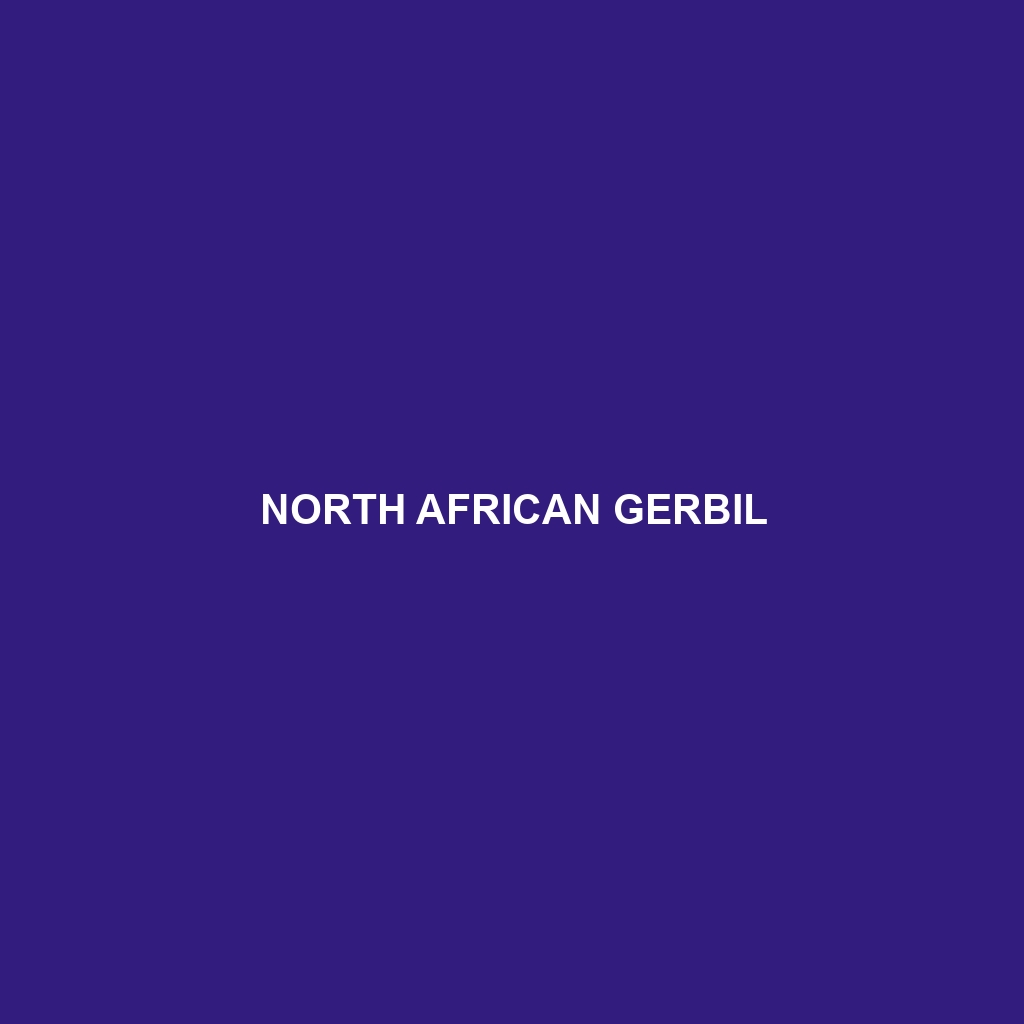North African Gerbil (Scientific Name: )
Habitat
The North African Gerbil is primarily found across the arid regions of North Africa, particularly in countries like Morocco, Algeria, and Tunisia. These small mammals thrive in sandy deserts and semi-arid landscapes, where they often create intricate burrow systems to escape the harsh environmental conditions and predators.
Physical Characteristics
North African Gerbils typically measure between 8 to 10 inches in length, including their long tufted tails. Their fur is soft and dense, displaying a coloration that ranges from sandy to light brown, helping them blend in with their desert surroundings. One distinctive feature of this species is their small, rounded ears and long, scaly tails that aid in balance.
Behavior
These gerbils are known for their social behavior, often living in small colonies. They are primarily nocturnal, meaning they are most active during the night, which helps them avoid the extreme temperatures of the day. North African Gerbils engage in various activities, including foraging, playing, and grooming, making them fascinating to observe.
Diet
The diet of the North African Gerbil consists mainly of seeds, grains, and vegetation. They are known to forage for food at night, storing excess food in their burrows for later consumption. Their ability to dig deep into the sand aids them in locating roots and bulbs, providing additional food sources in their arid habitat.
Reproduction
North African Gerbils breed throughout the year, with a peak during the warmer months. The females typically give birth to litters of 3 to 6 pups after a gestation period of around 25 days. The young are born blind and hairless, relying on their mother’s care for survival during the initial weeks of life. Notably, these gerbils exhibit strong parental investment, with both parents often participating in the care of the offspring.
Conservation Status
The conservation status of the North African Gerbil is currently listed as Least Concern by the International Union for Conservation of Nature (IUCN). However, habitat loss due to urbanization and agricultural expansion poses potential threats to local populations, making ongoing monitoring essential.
Interesting Facts
One fascinating aspect of the North African Gerbil is their remarkable ability to survive without direct access to water, obtaining moisture from the food they consume. Additionally, they have developed a unique social structure, with hierarchies often established within their colonies, making them an intriguing subject for behavioral study.
Role in Ecosystem
The North African Gerbil plays a vital role in its ecosystem as both a seed disperser and a prey species for various predators. By foraging and storing seeds, they contribute to the germination of plants in their habitat, promoting biodiversity. Additionally, they serve as a food source for birds of prey and larger mammals, highlighting their importance in maintaining ecological balance.
